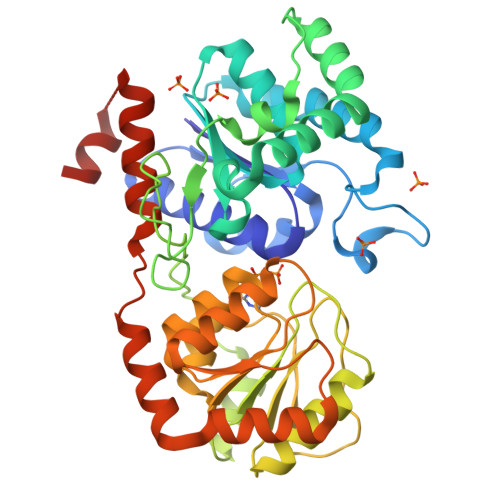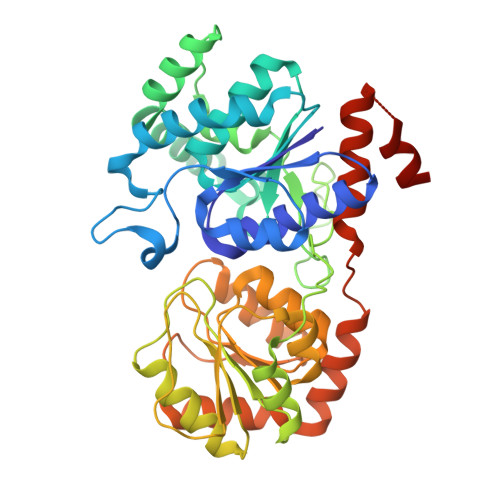Chimeric glycosyltransferases for the generation of hybrid glycopeptides
Truman, A.W., Dias, M.V.B., Wu, S., Blundell, T.L., Huang, F., Spencer, J.B.(2009) Chem Biol 16: 676-685
- PubMed: 19549605
- DOI: https://doi.org/10.1016/j.chembiol.2009.04.013
- Primary Citation of Related Structures:
3H4I, 3H4T - PubMed Abstract:
Glycodiversification, an invaluable tool for generating biochemical diversity, can be catalyzed by glycosyltransferases, which attach activated sugar "donors" onto "acceptor" molecules. However, many glycosyltransferases can tolerate only minor modifications to their native substrates, thus making them unsuitable tools for current glycodiversification strategies. Here we report the production of functional chimeric glycosyltransferases by mixing and matching the N- and C-terminal domains of glycopeptide glycosyltransferases. Using this method we have generated hybrid glycopeptides and have demonstrated that domain swapping can result in a predictable switch of substrate specificity, illustrating that N- and C-terminal domains predominantly dictate acceptor and donor specificity, respectively. The determination of the structure of a chimera in complex with a sugar donor analog shows that almost all sugar-glycosyltransferase binding interactions occur in the C-terminal domain.
Organizational Affiliation:
University Chemical Laboratory, University of Cambridge, Lensfield Road, Cambridge CB2 1EW, England, UK. awt26@cam.ac.uk




















